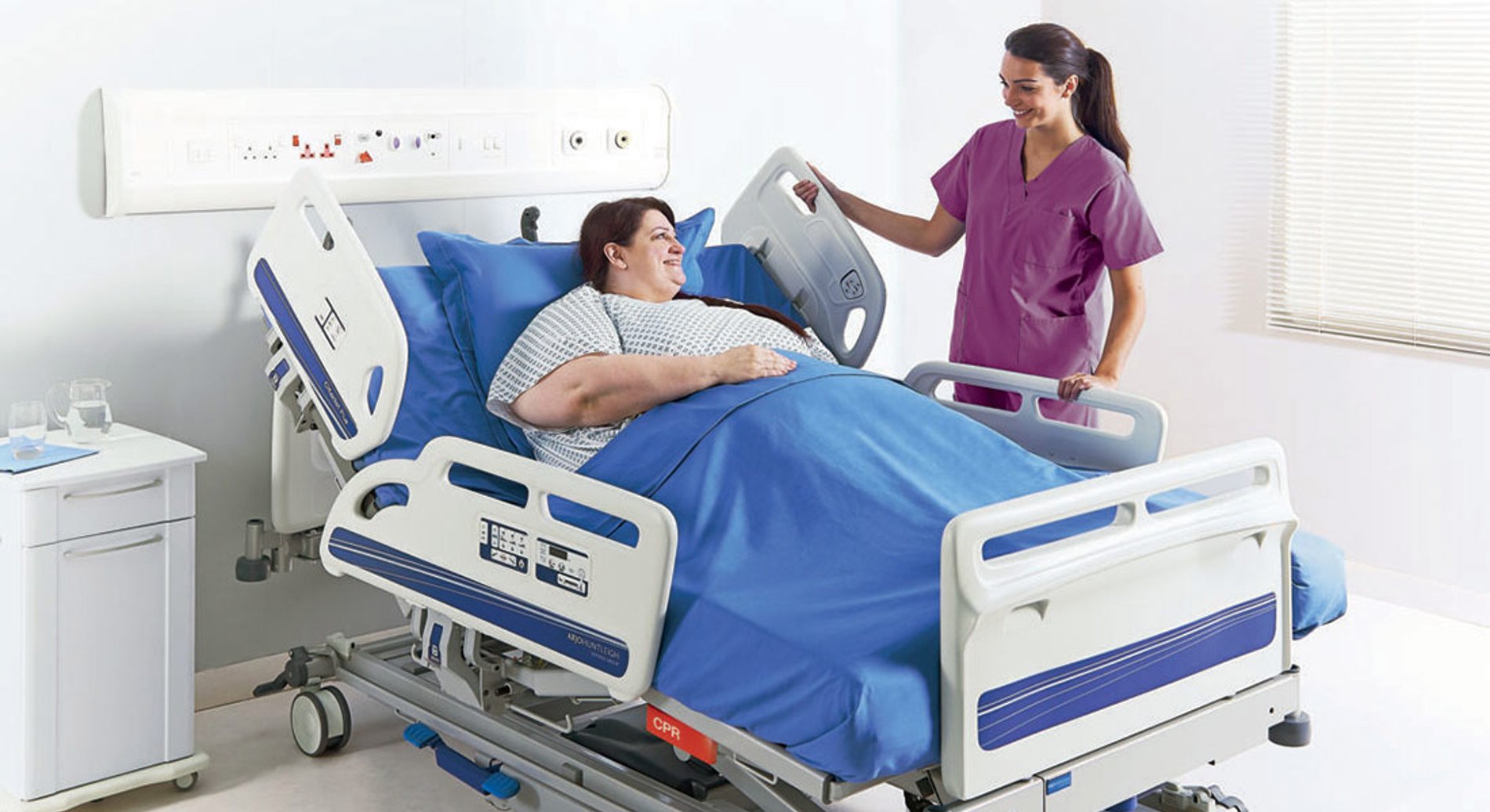A clinician's perspective: Bariatric medical beds for a safe & dignified care environment
According to recent data (2020) from Trust for America’s Health, the US adult obesity rate of 42.4% continues to grow over the years and is the first time the national rate has passed the 40% threshold.1

I have had a weight problem most of my life and at one point was considered morbidly obese by the medical community. According to the Centers for Disease Control and Prevention, “weight that is higher than what is considered healthy for a given height is described as overweight or obese.”2 I was at an advantage as I was very active still, working 12 hour shifts in a hospital and running after toddlers. Early in my nursing career, I recognized the need for medical equipment to accommodate patients of all sizes. At that time, we had a patient brought in by the Fire Department who had to be extracted from his home after cutting through a concrete wall and that required the wiring of two hospital bed frames together so staff could provide the proper care and support needed.
An important feature for bariatric frames and surfaces is to be able to support a safe working load of 1000 lbs. Not only is the weight limit important, but the frame has to be able to expand to at least 48 inches to allow for adequate repositioning of the patient without infringing on the side rails. Most standard hospital frames have a weight capacity of 500 lbs and frequently, we see patients that weigh 350-400 lbs placed onto these beds as they are not over the weight limit of 500 lbs and the facility does not want to incur the cost of a speciality bed. We need to assess our patients individually and even though they do not exceed the maximum weight limit, ensure that they are able to turn and reposition themselves (or with assistance) without being pressed into the side rails. Based on their body mass index, a patient weighing 400 lbs might need to be moved to a bariatric bed where the width can be expanded.
Bariatric equipment must be designed so that it allows a patient to retain dignity. There is a stigma associated with the bariatric patient and sensitivity to this population is necessary. Many bariatric beds are made of steel and look remarkably different from standard hospital bed frames. There may be patients weighing less than 400 lbs and would benefit from a bariatric surface, but may refuse the bed noting it “looks like a tank.”
As a Wound Care Nurse, another important feature of a bariatric bed is that it should be an open architecture frame that is designed to fit several different mattress options. Your patient might be working on in- and out-of-bed mobility; an option may be an air foam hybrid, such as an AtmosAir® Plus which offers prevention and treatment of pressure injuries, but is firmer and allows for self-mobility. Perhaps the patient is immobile or has several turning surfaces affected by wounds; they may benefit from an active therapy (alternating pressure) mattress, such as an Auralis® Plus. There may be a need for low air loss therapy and turn assist that is found on the MaxxAir® ETS.
Arjo has many options for caring for patients of all sizes, including support surfaces, bed frames, safe patient handling devices and VTE prevention solutions. Visit Arjo or reach out to your local Arjo Account Executive or Clinical Consultant to assist you in providing a safe and dignified care environment to accommodate all your patients.
References:
- Trust for America's Health. U.S. Adult Obesity Rate Tops 42 Percent; Highest Ever Recorded. September 17, 2020. https://www.tfah.org/article/u-s-adult-obesity-rate-tops-42-percent-highest-ever-recorded/.
- Centers for Disease Control and Prevention. Disability and Obesity. https://www.cdc.gov/ncbddd/disabilityandhealth/obesity.html.